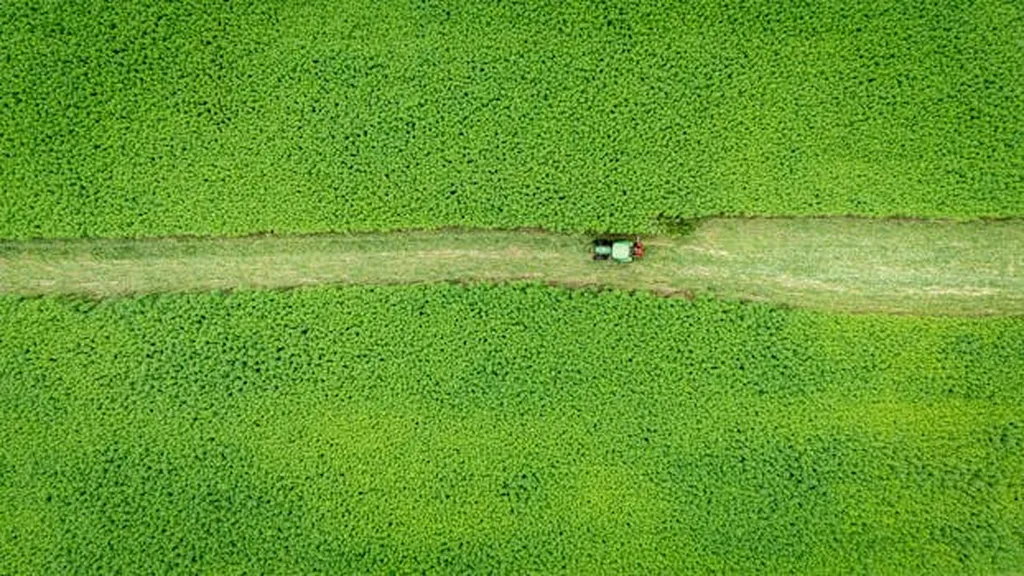In the heart of China’s arid Xinjiang region, a critical environmental challenge is unfolding, one that could reshape the future of oasis agriculture. Soil salinization, a silent menace, is threatening the productivity of irrigated areas, and a recent study published in *Agronomy* has shed new light on its complex dynamics. The research, led by Tingbo Lv from the College of Water Conservancy & Architectural Engineering at Shihezi University, offers a nuanced understanding of the spatial distribution and temporal evolution of soil salinization in the Xiaohaizi Irrigation Area, providing a roadmap for sustainable agriculture in the region.
The study, which analyzed soil samples collected before sowing and after harvesting in 2023, revealed that the soil salinization in the Xiaohaizi Irrigation District is moderate to high. The mean salt contents were found to be 8.29 g/kg in the 0–30 cm layer, 6.16 g/kg at 30–60 cm, and 4.80 g/kg at 60–100 cm before sowing, all indicating moderate to high salinity levels. The salt content showed a surface aggregation distribution with significant differences between different depths. The main ions that affect salinization are SO42−, Ca2+, Mg2+, Cl−, K+, and Na+.
The research also highlighted the uneven spatial distribution of salinization, with the degree of salinization being higher in the northwest and lower in the south. Moreover, the impact of human activities on surface soil salinization was found to be greater than that on deep soil. “The areas where the degree of salinization in the 0–30, 30–60, and 60–100 cm soil layers undergoes transformation account for 57.18%, 33.15%, and 26.9%, respectively,” noted Lv, underscoring the complexity of the issue.
The intensification of salinization after harvesting is a cause for concern, as it could significantly impact the agriculture sector. The commercial implications are profound, as soil salinization can lead to reduced crop yields, increased irrigation costs, and decreased soil fertility. The study’s findings could guide the development of targeted soil management and irrigation strategies, helping to mitigate the adverse effects of salinization and ensure the sustainable development of oasis agriculture.
The research also opens up new avenues for future developments in the field. By providing a detailed characterization of the spatial distribution and temporal evolution of soil salinization, it lays the groundwork for more sophisticated models and predictive tools. These could help farmers and policymakers make informed decisions, optimizing water use and minimizing the risk of salinization.
In the words of Lv, “This study reveals the complex dynamics of soil salinization in the Xiaohaizi irrigation area, providing scientific support for soil management and irrigation strategies in the region.” The implications of this research extend far beyond the borders of Xinjiang, offering valuable insights for arid and semi-arid regions worldwide. As the global population continues to grow, the need for sustainable agriculture becomes increasingly urgent, and studies like this one are a crucial step in the right direction.

